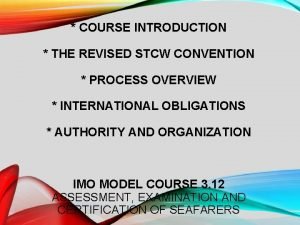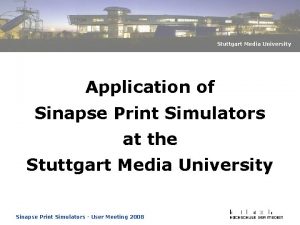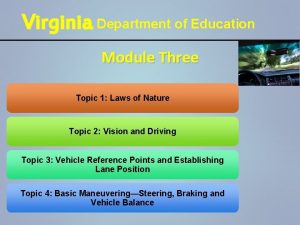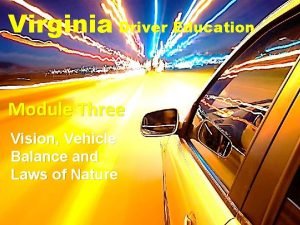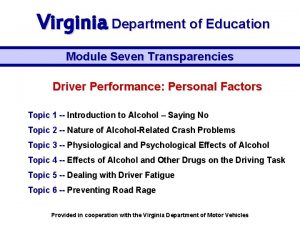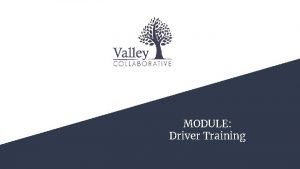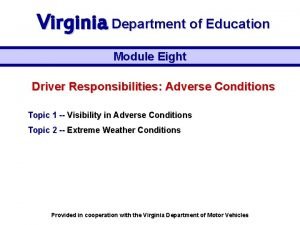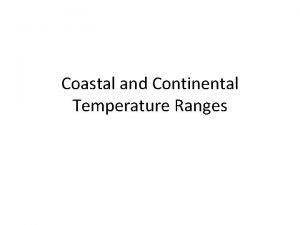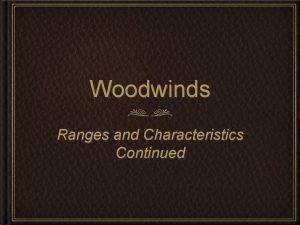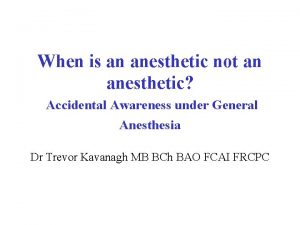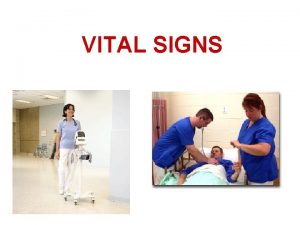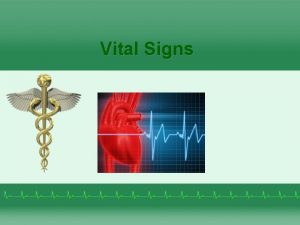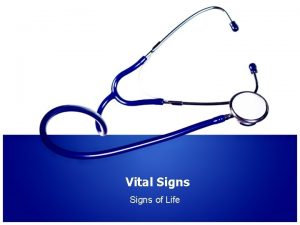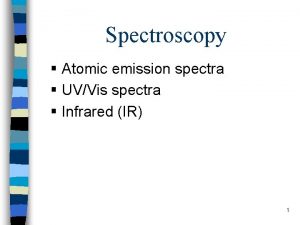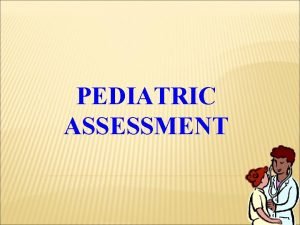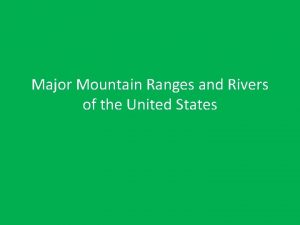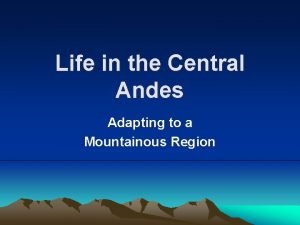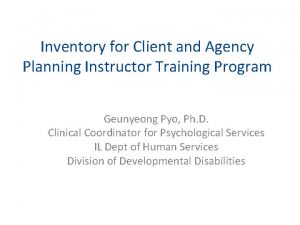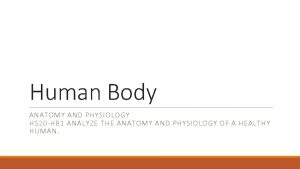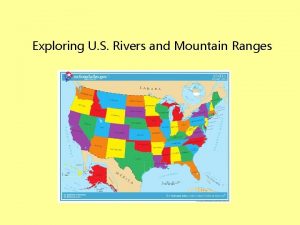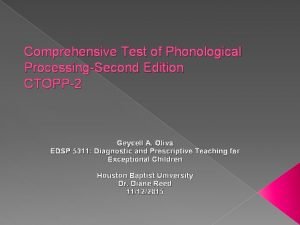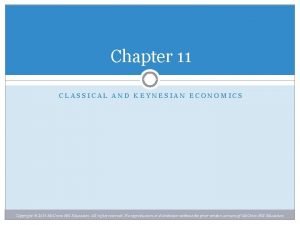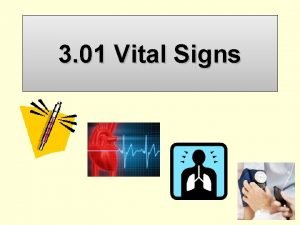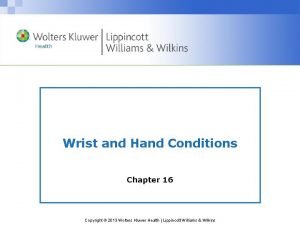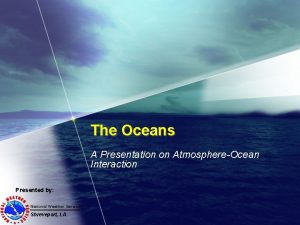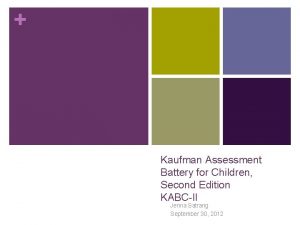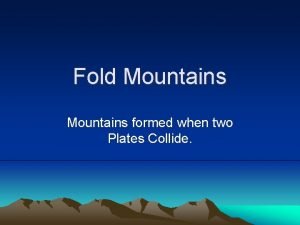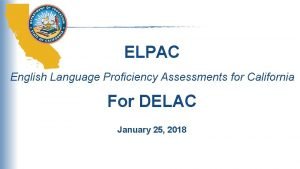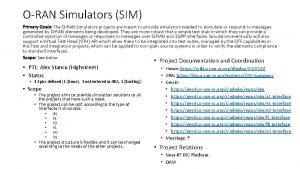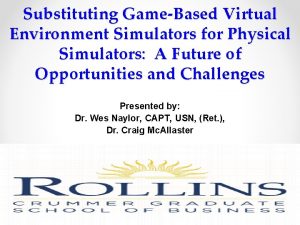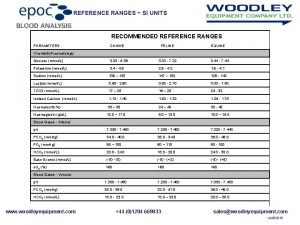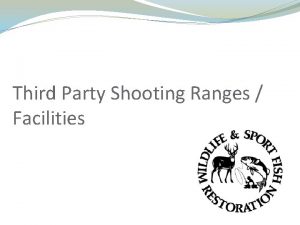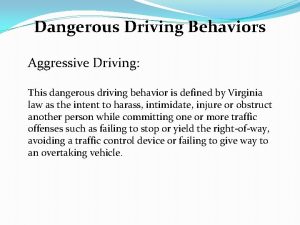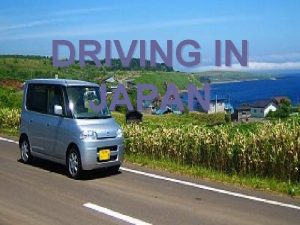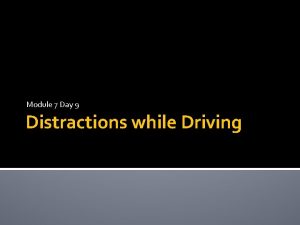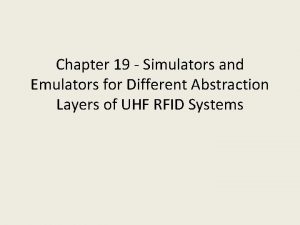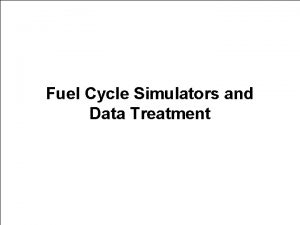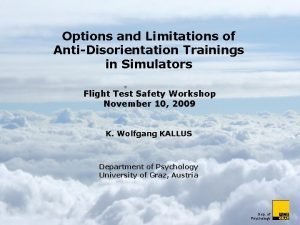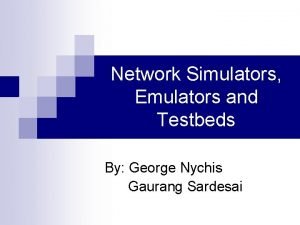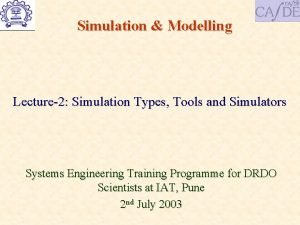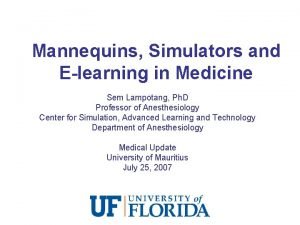Module C Driving Ranges and Driving Simulators Slide








































- Slides: 40

Module C Driving Ranges and Driving Simulators

Slide C-2 Purpose of the Module � To give the student a better understanding of how driving ranges and driving simulators can enhance a driver education program. � For more specific information on how to teach utilizing these program enhancements, you will need to seek further training. Module C PW page C-2

Slide C-3 Module Sections This module will cover two topics: � Driving ranges � Driving simulators Module C PW page C-2

Slide C-4 Module Objectives � By to: the end of this Module, you will be able ◦ Describe the role and use of driving simulators in behind-the-wheel-instruction. ◦ Describe the role and use of driving ranges or off -street practice areas in behind-the-wheelinstruction. Module C PW page C-2

Slide C-5 Driving Simulators � Designed to reproduce, with varying degrees of realism the experience of driving a motor vehicle within a realistic road and traffic environment. Module C PW page C-3

Slide C-6 Driving Simulators � Visual displays range from desktop computer screens to 360 -degree curved screens. � Motion reproduction of varying qualities. � Typically available in a wide range of configurations with costs that vary. Module C PW page C-3

Categories of Driving Simulators Based on Quality �Low quality �Medium-quality �High Module C quality PW page C-3 Slide C-7

Slide C-8 What Simulation Can Offer �A repetitive sequence in a protected environment. � Judgment and decision making abilities. � The instructor can observe student responses under simulated conditions. Module C PW page C-4

Slide C-9 Purpose of Driving Simulation � Liaison between classroom and in-vehicle instruction. � Provides additional knowledge. � Provides a variety of learning experiences. � Learning in a protected environment. Module C PW page C-4

Slide C-10 Skills Built Using Driving Simulators � Basic visual skills and abilities. � Basic perceptual skills and abilities. � Judgment and decision-making abilities. � Appropriate responses to situations of increased risk. � Procedural and vehicle handling skills. Module C PW page C-4

Slide C-11 Activity #1: Driving Skills Enhanced through Simulation Discuss the role of driving simulation and driving skills that are enhanced through this technique. Module C PW page C-4

Slide C-12 Suitability of Different Visual Systems Driving skills 180 -degree FOV screens with 1: 1 graphic-to-optic ratio plus blind spots 120 -degree FOV screens with graphic compression of 180 degrees and no blind spots Speed control Yes Brake reactions Lane keeping Turns at Y intersections Proceeding straight through intersections Yes Yes (Speed perception decreases as field of view narrows [3]) Yes Yes Not recommended Lane changes (with shoulder checks) Yes No Turns (with shoulder checks) Expressway merges (with shoulder checks) Yes No Module C PW page C-5

Slide C-13 Different Types of Simulators �Interactive �Simulated �Virtual Module C driving simulator driving reality PW page C-6

Slide C-14 Interactive Driving Simulator � Drivers directly control the movement of their vehicles. � Events can be programmed to occur that can train or test a driver’s ability to perform safely. Module C PW page C-6

Slide C-15 Interactive Driving Simulator � Can measure driver performance and behavior with precision and reliability. � Makes it possible to develop standardized scenarios with high-risk traffic situations. Module C PW page C-6

Slide C-16 Simulated Driving � Visual media like videos and games that reproduce aspects of the driving experience and require the performance of tasks similar to real life driving. Module C PW page C-6

Slide C-17 Virtual Reality �Simulates real or imaginary worlds through visual displays, sounds and sometimes tactile feedback. Module C PW page C-6

Slide C-18 Immersion � The extent to which the driver’s external sensory inputs are occupied with the driving task vs. any external distraction. ◦ Example: A 180 -degree visual configuration is more immersive than a single monitor desk-top simulator. Module C PW page C-7

Slide C-19 Presence � The measure of the degree to which we feel we are in or part of an environment. ◦ Immersion and presence are related but different. The difference is that immersion is the cause or the process and presence is the effect or the result. Module C PW page C-7

Slide C-20 Immersion and Presence � Driving simulators that produce a more immersive environment, through more realistic and comprehensive sensory outputs, have a greater likelihood of producing the presence that is critical learning. Module C PW page C-7

Guidelines to Ensure Students Know What to Expect � Instructor Slide C-21 must know and understand how to operate driving simulators. � Instructors should organize the driving simulation lesson into an introduction, the actual driving simulation video and a good summary. � Student orientation to equipment and assessment. � Student orientation to instructional programs. � Expectation of student performance in-vehicle. � Evaluation of student performance in driving simulation. Module C PW page C-8

Slide C-22 Activity #2: Driving Simulation Demo Participate as a student in many driving simulation lessons. Module C PW page C-8

Slide C-23 Methods of Evaluating Students � Based on instructor observation and computerized scoring system. � Written or verbal testing based on the simulation. � Commentary � Simulation Module C driving during the simulation. clips with response sheets. PW page C-9

Slide C-24 Limitations of Driving Simulators � Absence � Limited of kinetic feedback. visual field � Possible negative transfer of learning when errors or omissions are not identified and corrected. Module C PW page C-9

Converting Simulation into BTW Hours � Generally Slide C-25 accepted time ratio is 4: 1. � Driving simulation can be used as a part of classroom instruction. � Maximum Module C two hours substitution time allowed. PW page C-9

Slide C-26 Driving Ranges and Instruction � Driving range – a defined roadway course closed to public traffic and allowing for the recreation of various basic driving scenarios. � Driving range instruction – use of a closed course to instruct drivers. Module C PW page C-10

Slide C-27 Types of Driving Ranges 1. Dedicated, specially designed and built traffic mix facility. 2. Temporary, off-street exercise range that is most likely a parking lot. Module C PW page C-10

Slide C-28 Advantages of Driving Ranges � Repetitive experiences in a controlled environment. � More driving experience per hour of supervision/guidance. � Individual �A Module C student differences. low risk in-vehicle experience. PW page C-10

Slide C-29 Activity #3: Advantages of the Driving Range Discussion on the advantages of utilizing the driving range program as an enhancement to in-vehicle instruction. Module C PW page C-10

Basic Equipment Needed to Operate a Driving Range � Additional vehicles. � Communication � Vehicle Slide C-30 system. identification. � Storage. � Signs, signals, markings, cones � Control tower � Vehicle remote controls for ignition and braking � Skid pad or skid simulation equipment � Landscaping surfaces Module C for hills, various road chambers and PW page C-11

Slide C-31 Other Driving Range Considerations � Teaching stations protected from the elements. � Safety considerations of the students, instructors, and of the vehicles. � Types of basic skill exercises: ◦ Starting and stopping o Parking exercises ◦ Lateral maneuvers o Passing lanes ◦ Traffic mix o Backing exercises ◦ Left/right turns o ◦ Vision/steering skills Module C Various types of intersections PW page C-11

Slide C-32 Driving Range Safety Rules � Avoid contact with the vehicle when giving directions. � Stand well away from the vehicle. � Do not approach the vehicle unless it is in neutral and the parking brake is set. � Do not stand directly in front or in the rear of a vehicle. � Be Module C prepared to move at any time. PW page C-12

Slide C-33 Driving Range Safety Rules � Always keep the driver in sight, and make sure that you stay where the driver can see you. � If the driver cannot hear your directions, have them turn the engine off. � Never allow the driver to do anything dangerous. � Do not allow them to exit the vehicle without maintaining 3 points of contact on the vehicle. Module C PW page C-12

Slide C-34 Converting Driving Range Time to BTW Time � Generally accepted time ratio is 2: 1 (two hours of range instruction is equivalent to one hour of onstreet instruction). � Maximum Module C two hours substitution time allowed. PW page C-13

Other Activities a Driving Range May be Used For �Public driver improvement programs. �Motorcycle operator courses. �Private driver training. �School functions. Module C PW page C-13 Slide C-35

Slide C-36 Summary of Program Enhancements � Can add to the learning environment. � Each enhancement has its strengths weaknesses. � Some � May Module C may have a high initial cost. reduce instructional costs over time. PW page C-14

Slide C-37 Module Summary � With the conclusion of this Module, you should be able to: ◦ Describe the role and use of driving simulators in behind-the-wheel-instruction. ◦ Describe the role and use of driving ranges or off -street practice areas in behind-the-wheelinstruction. Module C PW page C-15

Slide C-38 Module Review Activity: Key Words Matchup Complete the Activity in the Participant Workbook. Module C PW page C-16

Slide C-39 Questions and Answers � What are some of the advantages of incorporating range exercises into a driver education program? � What are some of the driving simulators strong points? � What is the purpose of driving simulation? Module C

Slide C-40 Questions? ? Module C
 What is heel and toe polka
What is heel and toe polka Stcw chapter viii
Stcw chapter viii Sinapse print simulator
Sinapse print simulator Drivers ed module 3 topic 1
Drivers ed module 3 topic 1 Allows maximum stopping force without locking up the brakes
Allows maximum stopping force without locking up the brakes Curriculum guide for driver education in virginia module 7
Curriculum guide for driver education in virginia module 7 Driving module
Driving module Module 8 topic 1
Module 8 topic 1 C device module module 1
C device module module 1 Coastal and continental temperature ranges
Coastal and continental temperature ranges Slide and divide factoring
Slide and divide factoring Range of the clarinet
Range of the clarinet Woodcock johnson classification ranges
Woodcock johnson classification ranges Bis monitor ranges
Bis monitor ranges Labored breathing
Labored breathing What are the 8 vital signs?
What are the 8 vital signs? Normal level of vital signs
Normal level of vital signs Normal vital signs for children
Normal vital signs for children Normal vital signs by age
Normal vital signs by age Electronic energy level
Electronic energy level Macule papule patch plaque
Macule papule patch plaque Indiana major mountain ranges
Indiana major mountain ranges Major mountain ranges world map
Major mountain ranges world map Icap score ranges
Icap score ranges Wisc-v substitutions
Wisc-v substitutions Normal vital sign ranges
Normal vital sign ranges Mountain ranges in south america map
Mountain ranges in south america map Mississippi river length
Mississippi river length Ctopp-2 scoring tables
Ctopp-2 scoring tables Three ranges of the as curve
Three ranges of the as curve Economics keynesian vs classical
Economics keynesian vs classical Three ranges of as curve
Three ranges of as curve Normal adult vital signs
Normal adult vital signs Kiloh nevin sign
Kiloh nevin sign Types of anticoagulant
Types of anticoagulant Dealseas
Dealseas Rias score chart
Rias score chart Low tide causes
Low tide causes Kabc conceptual thinking
Kabc conceptual thinking You can find parallel to fold mountains
You can find parallel to fold mountains What are the 4 elpac levels?
What are the 4 elpac levels?

